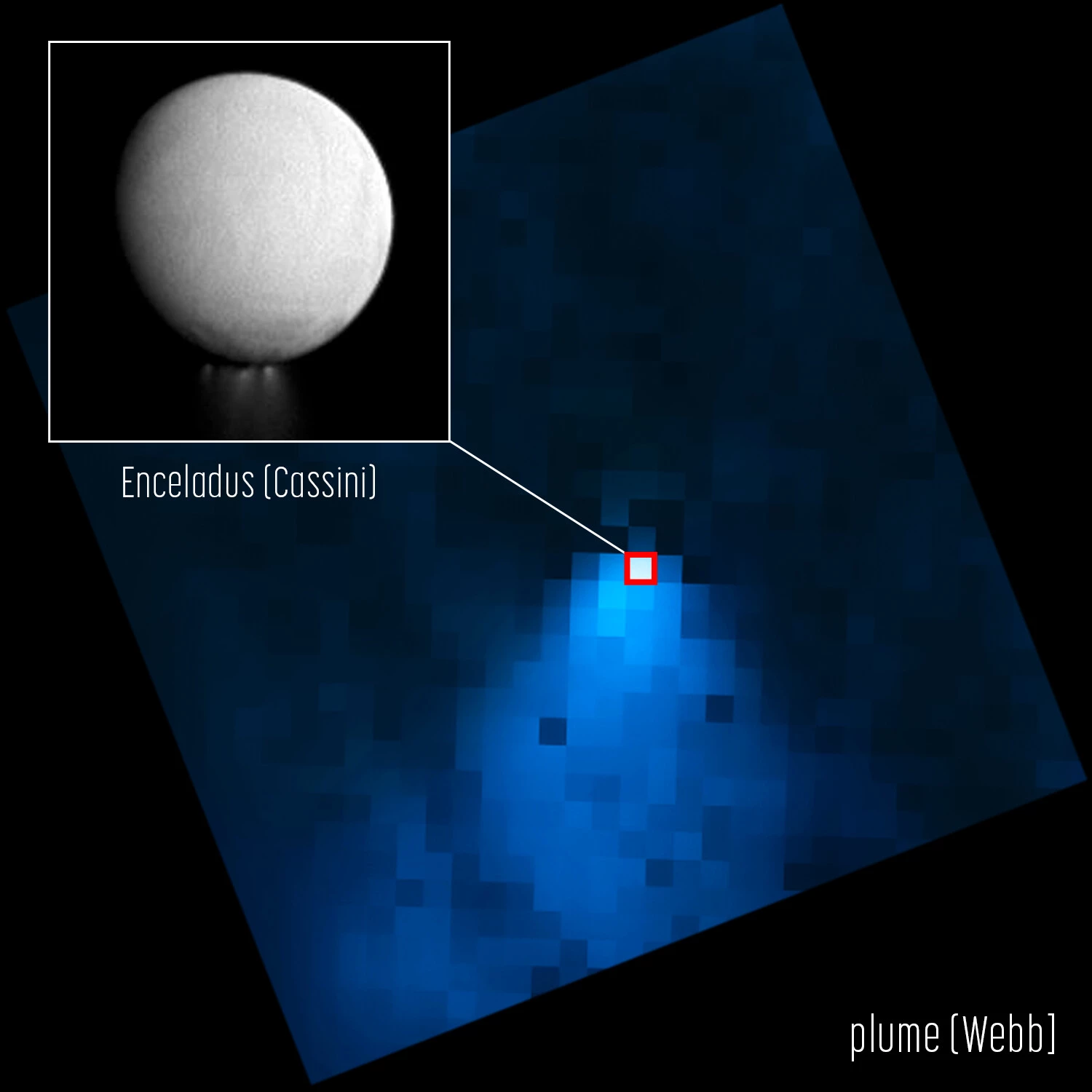Saturn’s moon Enceladus is famous for its plumes that spray water into space. Now the James Webb Space Telescope has watched the biggest known plume so far, spanning thousands of miles, and studied how they feed a huge water “donut” around Saturn.
It may look like a big boring snowball, but Enceladus is one of the most intriguing worlds in our solar system. That icy outer shell is hiding a global ocean of liquid water, which could potentially host life. And that ocean isn’t content to stay put either – it regularly spurts through cracks in the ice to form plumes that spray water and organic molecules onto the moon’s surface and out into space.
Over the years, NASA’s Cassini probe has captured images of these plumes towering several hundred miles high, and even plunged through them to analyze what’s in the water. But now, James Webb has cast its infrared eyes on Enceladus and observed a plume that’s much bigger than any previously known.
The telescope spotted a plume that stretches over 9,600 km (5,965 miles) away from the moon – that’s more than twice the width of the continental United States, or about 20 times wider than Enceladus itself. The water was measured to be spraying out at a rate of 300 liters (79 gallons) per second.

So where does all this water go? The scientists found that about 30% of it feeds into a watery donut that surrounds Saturn at about Enceladus’ orbit. The other 70% falls towards Saturn, its rings and other moons.
The new observations will help astronomers better understand this intriguing system, as well as the moon that’s currently near the top of the list for most promising places that we might find life.
The research has been accepted for publication in the journal Nature Astronomy (PDF).
Source: ESA






